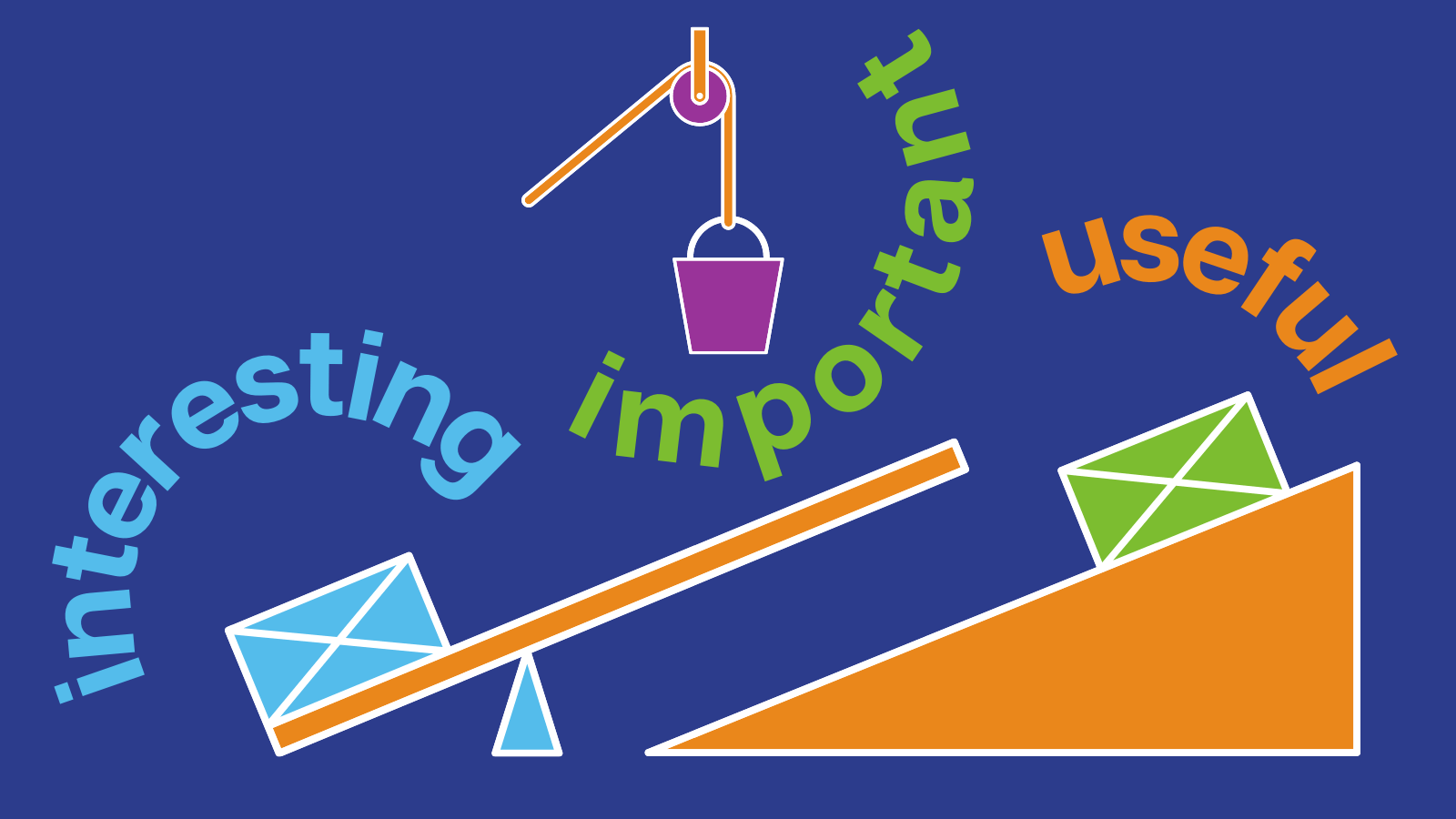If you try this activity with your students, we’d love to see what you do. Share your journey via the #Inspired2Learn hashtag on your preferred social platform.
Discipline: These activities can be applied in any class or subject area.
Age level: Better for older students but can be adapted for younger grades.
Time: 15 minutes to a full class period depending on how much time you want to devote.
Materials: You can use this document (you will be prompted to make your own copy) to brainstorm.
A key to building mutual respect in your classroom is recognizing and appreciating what your students find important. That can be difficult as adults because a lot of times we don’t value the same things they do. But creating space for them to talk about what matters to them can go a long way toward building their respect for what we’re trying to teach them.
A key to building mutual respect in your classroom is recognizing and appreciating what your students find important. That can be difficult as adults because a lot of times we don’t value the same things they do. But creating space for them to talk about what matters to them can go a long way toward building their respect for what we’re trying to teach them.

Interesting, Important, Useful
As teachers these words can serve as guides in crafting our instruction. But what do they mean to our students? This activity invites them to share their reflections with us which can in turn inform our approaches to curriculum.
Using this document (you will be prompted to make your own copy) or a chart at the front of the room, begin by having students define these terms.
What makes something Interesting?
What makes something Important?
What makes something Useful?
Note their observations and collaboratively turn these into definitions.
Next, invite students to reflect on their lives and share what they find Interesting, Important, and Useful. You could do this on this document (you will be prompted to make your own copy) or on chart paper around the room. When students spot something someone else has written that resonates, add a + sign next to it.
Taking time to do this with your students periodically can give you an embarrassment of riches to work with when planning your lessons. You now have a set of hooks and potential frames and applications that you can draw upon to make the content feel relevant. Noting the areas where you see several +s lets you know that will resonate with more than one student. Then, your task is to take WHAT you have to teach and think about HOW you can teach it in a way that touches upon some of these interests.
Once your students are conversant in this framing you can use it to learn what they might find interesting, important, or useful about a concept already required in your curriculum. For example, if you’re teaching American History you might watch this short video and then discuss it through those three lenses.
https://americanindian.si.edu/americans/#stories/the-invention-of-thanksgiving
- What did you find interesting in that video?
- What did you find important?
- What about this video could be useful?
Standards Addressed by these Activities
Common Core College and Career Readiness Anchor Standards for Language
CCSS.ELA-LITERACY.CCRA.L.1 Demonstrate command of the conventions of standard English grammar and usage when writing or speaking.
Vocabulary Acquisition and Use:
CCSS.ELA-LITERACY.CCRA.L.6 Acquire and use accurately a range of general academic and domain-specific words and phrases sufficient for reading, writing, speaking, and listening at the college and career readiness level; demonstrate independence in gathering vocabulary knowledge when encountering an unknown term important to comprehension or expression.
Common Core College and Career Readiness Anchor Standards for Writing
CCSS.ELA-LITERACY.CCRA.W.1 Write arguments to support claims in an analysis of substantive topics or texts using valid reasoning and relevant and sufficient evidence.
Common Core College and Career Readiness Anchor Standards for Speaking and Listening
CCSS.ELA-LITERACY.CCRA.SL.1 Prepare for and participate effectively in a range of conversations and collaborations with diverse partners, building on others’ ideas and expressing their own clearly and persuasively.
Presentation of Knowledge and Ideas:
CCSS.ELA-LITERACY.CCRA.SL.4 Present information, findings, and supporting evidence such that listeners can follow the line of reasoning and the organization, development, and style are appropriate to task, purpose, and audience.
Collaborative for Academic, Social, and Emotional Learning Competencies
Self-management: The abilities to manage one’s emotions, thoughts, and behaviors effectively in different situations and to achieve goals and aspirations. This includes the capacities to delay gratification, manage stress, and feel motivation and agency to accomplish personal and collective goals.
Social awareness: The abilities to understand the perspectives of and empathize with others, including those from diverse backgrounds, cultures, and contexts. This includes the capacities to feel compassion for others, understand broader historical and social norms for behavior in different settings, and recognize family, school, and community resources and supports.
Responsible decision-making: The abilities to make caring and constructive choices about personal behavior and social interactions across diverse situations. This includes the capacities to consider ethical standards and safety concerns, and to evaluate the benefits and consequences of various actions for personal, social, and collective well-being.
Relationship skills: The abilities to establish and maintain healthy and supportive relationships and to effectively navigate settings with diverse individuals and groups. This includes the capacities to communicate clearly, listen actively, cooperate, work collaboratively to problem solve and negotiate conflict constructively, navigate settings with differing social and cultural demands and opportunities, provide leadership, and seek or offer help when needed.
